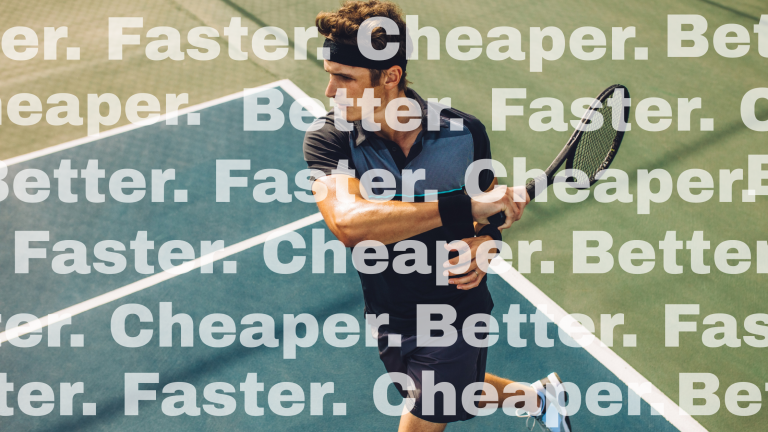24 min
The term “second brain” has gained immense popularity among influencers and life-hackers in recent times. Coined and popularized by Tiago Forte in 2022, it essentially refers to a personal management system that helps individuals collect, store, and organize their thoughts and information, thereby freeing up their brainpower for other tasks.
Considering the number of brilliant minds we’ve assembled at clubcloud, it’s a bit inaccurate to say our company has a second brain. However, when you consider our extensive knowledge dump repository system, which reduces our cognitive responsibilities by preserving our thoughts, ideas, and knowledge for future retrieval, at the very least, it’s hard to think of it as anything other than an extension of our collective brains.
Perhaps it’s a result of my past lives as a city police officer and trial attorney, but I have an insatiable compulsion towards documentation. In fact, I’ve always relied on a second brain-like concept and have even written about its significance in my life in my own self-help book. So, when our Chief Mobile Officer, Harold “Hal” Leonard, who also serves as our business operations chief, encouraged us to explore innovative methods for documenting clubcloud’s past projects, achievements, processes, best practices, and sales intelligence, I immediately jumped on board.
To facilitate and execute Hal’s initiatives, we primarily employ three methods for documentation: dedicated conversational Slack channels, after-action reports, and best practices. This blog aims to provide a comprehensive exploration of each of these methods.
Slack Channels:
Before starting any project, we thoroughly discuss and understand its parameters. We have assembled a diverse group of individuals with a wide range of skills, including club operations, technology, and business. Each of these areas has its own unique language, so it’s important that we define terms, collectively understand their meanings, and ensure that we use them correctly in our conversations.
An accelerator instructor of mine once shared that poor internal relationships can destroy a business faster than a poor product. We fully comprehend this dynamic at clubcloud. Therefore, when individuals like Hal can serve as a universal translator between our technology and business members, or when Andrew Imrie, our Chief Information Officer, can articulate points from his perspectives as both a tennis professional and a skilled computer developer, everyone stops speaking and begins actively listening.
We use our Slack channels for precisely that purpose. While real-time conversations are great and it’s important for everyone to be able to articulate their position verbally, there’s no substitute for the written word when it comes to memorialization and reference.
Of course, conversations are essential for running a business, but when we have important discussions, we make sure to document their content promptly and accurately on the relevant channel. That way, every significant conversation, whether written or spoken, is preserved in the appropriate channel. Once the project or task is completed, we simply archive the Slack channel for easy future reference.
As a natural note taker, I relish the freedom to review a Slack channel’s content whenever and wherever I please. As a group, this accessibility empowers us to grasp the essence of past conversations at our fingertips. When disagreements arise regarding our current position, future goals, or past discussions, we can simply refer to our Slack transcript. This ensures clarity on what was said, by whom, and under what circumstances, thereby eliminating misunderstandings, we also mitigate the associated hard feelings.
After-Action Reports
As soon as we successfully implement any change to our company or its platform, we complete an after-action-report. The title of the report aptly encapsulates its essence. Concise yet effective, after-action reports serve as a tool to memorialize our process from inception to completion, emphasizing both our achievements and, perhaps more significantly, our shortcomings. Additionally, they identify any necessary changes for future reference. Unlike Slack channel conversations, which capture a process as it unfolds, our after-action reports offer a bird’s-eye view from the finish line. This perspective eliminates the “prisoner of the moment” effect often present in our Slack conversations. By reviewing a completed and successful process, we gain an objective perspective, enabling us to critically evaluate ourselves both positively and negatively.
Although our Chief Technology Officer, Luis Garcia, primarily drafts our after-action reports from the perspective of his office, these reports are not intended to dictate a single, definitive path to success. We acknowledge that there might have been multiple viable paths to achieving our objectives. If, from an after-action report perspective, all these paths are valid, they are included in the report. We firmly believe that it’s more important to get it right than to be right, and Luis embodies this sentiment. Consequently, we consistently set aside our egos and adhere to the path or paths that will lead us to success. Our after-action reports serve as a testament to these paths to success.
Best Practices
If there is anyone that can stifle creativity more than a lawyer, I have not met them. Their over-legislation and burdensome codification of processes are incredibly annoying and officious. However, in a world where human resources, legal compliance, and litigation are concerned, we must have certain legal protocols in place.
In my opinion, the key to effective legal leadership in a company lies in distinguishing among the legal tasks that need to be done, should be done, and can be done. The easiest tasks to address are those that require immediate attention. For instance, if you need to implement a legal safeguard, it’s best to do so without any negotiation or compromise.
However, the most challenging legal tasks are those that should or could be done but don’t necessarily need to be implemented. When we identify such a task, we initiate a conversation from the perspective that it is necessary. However, we also engage in a discussion that involves compromise from both a legal and subject matter perspective to determine an achievable path that strikes a balance between intrusion and the protection of our legal interests.
Conversely, when we identify a legal task that can be done but doesn’t necessarily need to be implemented, the initial question arises: will we legislate it? If we decide we will, then we actively engage in discussions that guide us towards the least intrusive path to achieving our goals.
By following these procedures, we are aware from the outset that certain legal circumstances are beyond our teams’ purview and should not be discussed. These matters are strictly within the authority of the creativity-stifling lawyers. We all understand that this path may not be pleasant, but knowing this beforehand ensures that no one feels bullied by the process. When legal issues involve some discretion, we can engage in discussions that ensure that everyone feels heard. As part of the process, our entire team understands the legal parameters and the expectations for their adherence to them from the onset.
Our “second brain” plays a crucial role in the smooth functioning of clubcloud. Even when running smoothly, a rapidly-growing company can sometimes feel disorganized, chaotic, and scattered. However, our established, systematic process of documenting our accomplishments, requirements, and tasks serves as a guiding compass, helping us stay on track, maintain our focus, and proving that two heads are better than one.

min






